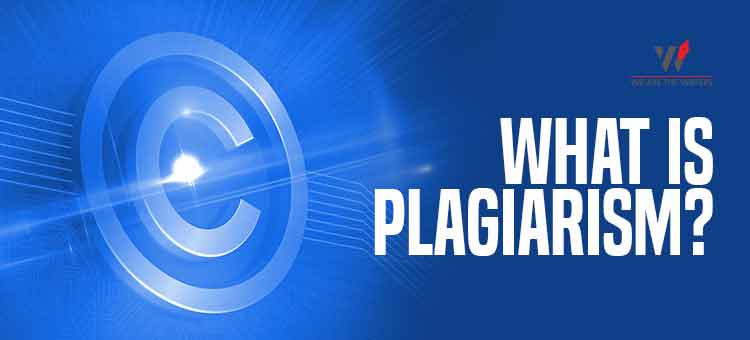Content and plagiarism go hand in hand. Referring to someone’s work is a good idea. However, that doesn’t allow you to copy their work. That loses originality! Plagiarism also has some legal attributes. But do you exactly know what is plagiarism?
We are sure you have heard about the term more than once. This made you wonder why does it matter so much. Continue reading…
It’s not that plagiarism only takes place in professional writing. You must have heard your professors saying to avoid plagiarism in your projects and assignments. But do you know plagiarism meaning in real terms? This blog is all about what is plagiarism? How you can use a plagiarism checker for your text and many more.
Suggested Blog:
- SEO Copywriting vs SEO Content Writing | Learn the difference in 6 minutes
- All about UI UX | Learn to make your Content Design better in 2022
Table of Contents
What is plagiarism?
Plagiarism is often thought of as copying another’s work or borrowing somebody else’s concepts. Words like copying and borrowing are still tolerable. Plagiarism is a serious offense. What is plagiarism anyway? Plagiarism is more of stealing somebody else’s work.
It is when you represent somebody else’s work or ideas as your own, with or without their permission, by incorporating them into your work without giving them full credit. It encompasses all published and unpublished material, whether in the script, paper, or digital form. Plagiarism can be deliberate as well as unintentional.
For academic projects and assignments, to plagiarize is to take material from the internet, books, and other sources and pretend it to be your self-created. Plagiarism occurs when someone fails to properly quote, reference, or respect the words or ideas of another person.

Understanding plagiarism meaning is essential if you are writing. Be it a script, a news article, blog, or any writing piece.
To understand it better read more about it in : wikipedia.org
Why is plagiarism a bad idea?
Plagiarism is unethical because it refuses to deliver credit. Making someone else’s work yours is nothing but a lack of creativity and dedication.
It is anticipated that the material you present is of your own, whether you are a student writing a paper for a course or a researcher publishing to a publication. Receiving recognition for something you haven’t completed has a negative influence on your training and misguide your audience.
However, that isn’t to say you can’t use other people’s work. Academic writing necessitates the use of pre-existing ideas and research. However, you must make a clear distinction between your own words and ideas and that of your references.
This kind of offense also takes place in the field of art and music. It is often viewed as a form of stealing from those who create visual art, music, or other forms of creative labor. When you print or market material you didn’t make, you’re robbing the original source of revenue and credit for their contribution.
All creators and makers have creative outlets, and these sources have shaped much of the world’s rich cultural legacy. Give fair citation to the creator if you find yourself being truly inspired by a piece of research.
If you are a website owner or work for a particular website. Uploading plagiarized content is definitely the wrong choice to make. It adversely affects the SEO of your content and ultimately hampers the rankings and analysis in search engines.
Suggested Blogs:
- Complete Beginners Guide to SEO | 8 min read
- SEO Copywriting – A Strong Appeal to Users and Algorithms
What can be considered plagiarism?
You must have become familiar with what is plagiarism. However, you might still wonder what all can be said to be plagiarized. This section is for you! Know the common aspects of plagiarism and take measures to avoid the same when writing.
One of the main things that come under the wide tree of being plagiarized is submitting somebody else’s writing as if it were your own. Moreover, using their creativity without mentioning them, neglecting to put a quotation in quotation marks, providing false information about the origin of a quotation, and modifying words but replicating the grammatical structure of a source without giving credit are all examples of plagiarism.
Additionally, even though you offer credit, plagiarizing many words or concepts from a source that forms up a good portion of your work causes the problem.
How can I check if my content is plagiarized?

Many companies require their writers to examine their work for plagiarism before submitting it. Others may do it themselves and warn the designated individual to proceed with caution. But how do you know if someone has plagiarized your work? Using a plagiarism checker free or paid is the simple solution.
Your professors or readers can easily detect if your content is original or stolen. How? By observing your writing language, tone, and choice of words. Moreover, a plagiarism checker free tool or even paid for that matter makes it easier.
If you’re concerned about unintentional plagiarism, which is very much common, put your text through a plagiarism checker before submitting it.
Plagiarism checkers on the internet work similarly to those used by colleges and businesses. You upload your text, and the checker runs it through their database, looking for any matches to sites, magazines, or other published sources.
Following the scanning, the checker displays the similarities it identified among your text and the information in its repository, usually as a percentage. After that, you can scroll through and add quotes or citations or make improvements as needed.
The reliability of the results is controlled by the volume of the data and the powers of the equipment. There are quite a number of online plagiarism checkers. Namely, Grammerly, smallseotools , plagiarismdetector , quetext and many more.
While some are totally free, some demand a certain amount of subscription fee. Whatever the nature is, these tools help create original content out there.
Suggested Blogs:
- LET’S LEARN CONTENT WRITING FOR FREE !
- A well described guide to Social Media Content – 7 minutes read
Self plagiarism: know what it is

Ever heard of self-plagiarism? You must have. As the name suggests self plagiarism is stealing words or phrases or concepts from one’s own self. Well, is it even possible? Yes, it is!
Recycling or repeating one’s own specific words from previously published works is usually referred to as self plagiarism. While it does not constitute outright theft of another’s ideas, it might cause problems in the professional publishing field.
Self plagiarism is a term used to describe a number of different behaviors in which part or all aspects of an already published text are repeated in a new publication with unclear or even no recognition of its past transmission. The most egregious of these activities is when a former piece of writing is reissued with little or no changes.
Self plagiarism gives rise to other unethical issues like copywriting, data fragmentation, etc. To avoid this kind of unintentional or intentional offense, think creatively. Moreover, cute the ideas or words you are adapting from your previous work.
Will you be sued if your content is plagiarized?
By now, we know what is plagiarism, but is it really illegal? Copyright is the most direct place for plagiarism to become a judicial concern. Punishment for plagiarism seems to be just an idea as it’s not yet in practice. However, firms are free to take their choice of actions if their writers repeatedly make use of the serious offense.
Plagiarism can be prosecuted in a variety of ways, including copyright violations. When applying for research funding or giving projects to clients, there are typically agreements that stipulate that the material submitted must be original. Plagiarism is a valid contract that can lead to legal action.
Conclusion
You write because you love it and you can. By stealing someone else’s work questions your dignity and principles. Refer, take ideas but do not totally rely on them. Make your own and win your audience. Trust me that’s more satisfying!





 WhatsApp
WhatsApp